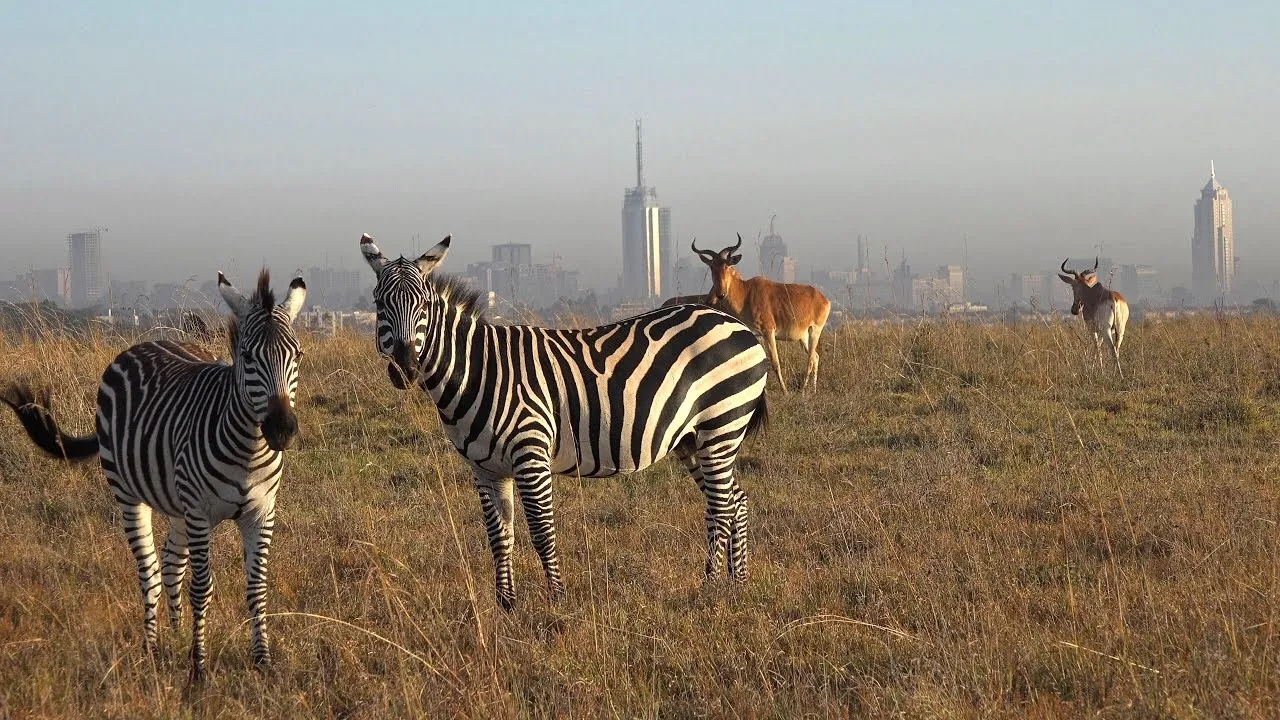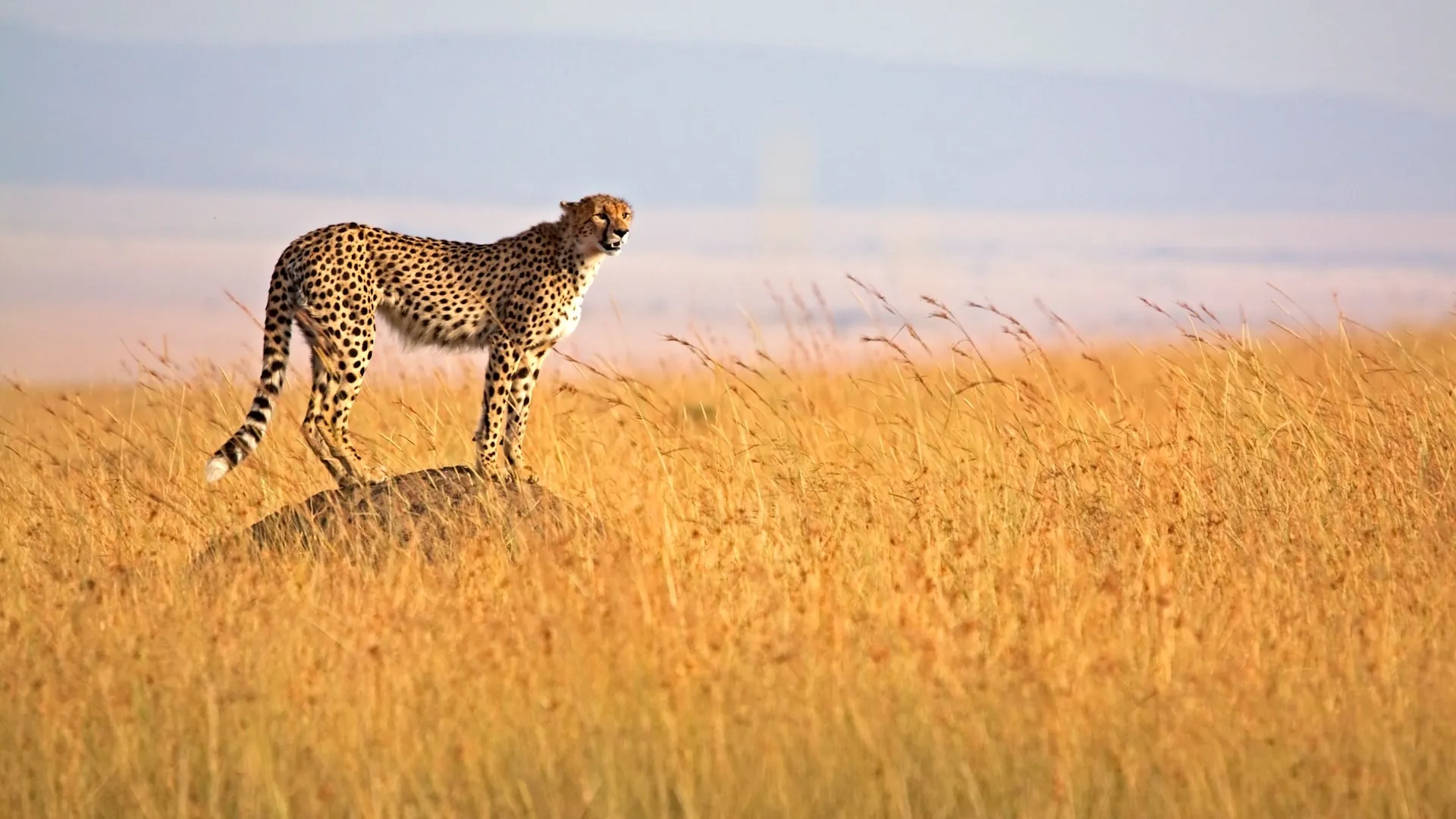Ultimate Guide to the 2025 Masai Mara Migration: Timing & Tips for Spectacular Views
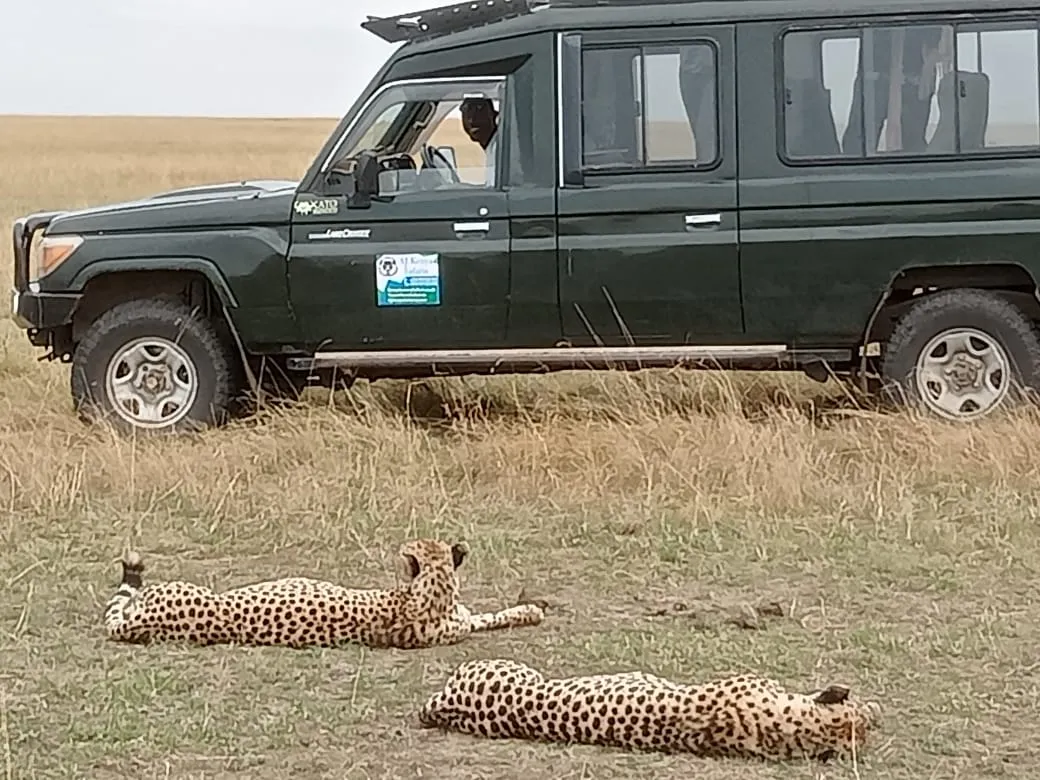
Planning a safari to the Masai Mara National Reserve? Get ready for a close encounter with the infamous Big Five, big cats, be part of the riveting Great Wildebeest Migration, and soak in the enduring Maasai culture. With our guide, find out when to visit, what to bring, and how to navigate this majestic wilderness for the experience of a lifetime, all while staying respectful of the natural habitat and its age-old human guardians.qa
Key Takeaways and How to Book Your Safari
The Masai Mara National Reserve in Kenya is a wildlife haven known for its vast savannah plains, variety of wildlife, and the iconic annual Great Wildebeest Migration, attracting visitors worldwide.
Masai Mara offers diverse safari experiences including game viewing, hot air balloon safaris, and nature walks, local communities safari, complemented by luxurious accommodations like Angama Camp, Mara Plains Camp, Sand River Camp, Maji Moto, and Bateleur Luxury Camp.
Cultural immersion with the semi-nomadic Maasai people is an integral part of the Masai Mara Game Reserve experience, and travelers should consider optimal visit times, necessary gear, and health precautions for the best experience.
Masai Mara is a photographer’s paradise and also the home of a big cat diary.
You can reach us at +254-748-258-880 or email at james@ajkenyasafaris.com or safarioffers@ajkenyasafaris.com to book your Masai Mara tour.
Our Most Booked Masai Mara Safari Packages
Discovering Masai Mara National Reserve
The Masai Mara National Reserve is a land of diversity and wonder. Spanning an area of 1510 square kilometers, it is characterized by its vast expanse of gently rolling African savannah plains, adjoining the Serengeti National Park in Tanzania to the south. This quintessential East Africa safari backdrop is home to a wide variety of wildlife, including:
- African Elephant
- African Buffalo
- Zebra
- Giraffe
- Hyena
- African Lion
- Leopard
- White & Black Rhinos
These majestic creatures freely roam the Maasai Mara National Reserve wilderness, inviting visitors from around the world to marvel at the abundance of life that thrives in this corner of East Africa, particularly in the south west Kenya region.
One of the most iconic events that define the Masai Mara National Park is the annual wildebeest migration. Every year, millions of wildebeests, along with thousands of zebras and gazelles, traverse the Mara-Serengeti ecosystem in search of greener pastures and water resources.
This remarkable spectacle, often referred to as the “Greatest Show on Earth,” is but one of the many wonders that await you in the Masai Mara National Reserve. It’s time we examine this phenomenon further and learn about the vital force that sustains this vibrant ecosystem – the Mara River.
The Great Wildebeest Migration
The Annual Wildebeest Migration is a spectacle that leaves even the most seasoned travelers awestruck. Nearly two million wildebeest, zebra, and gazelle embark on a treacherous journey within a seasonal yearly cycle, driven by the cyclical patterns of the African climate in their quest for fresh, verdant grass.
From August to November, the plains of the Maasai Mara Game Reserve come alive with the thunderous hooves of these migrating herds, creating a wildlife spectacle that is unparalleled anywhere else in the world.
The migration follows a route from the expansive Serengeti National Park plains in Tanzania to the tan-colored hills of Kenya’s Masai Mara, including the Mara North Conservancy, which is a vital part of the migration route.
Witnessing the sheer resolve of over a million wildebeest & zebras as they brave predators and the dramatic river crossings, a testament to nature’s indomitable spirit and survival instinct in the national parks and national reserves. Next, we transition our focus from the sweeping endless plains of Masai Mara to the life-sustaining and pristine riverine forests of Talek River and Mara River.
Mara River: A Lifeline for Wildlife
The Mara River is more than just a body of water; it’s a lifeline, a vital water source for the region’s wildlife, and an exciting location for predator-prey interactions. Starting from the Kenyan highlands, the river traverses through the grasslands of the Maasai Mara National Reserve in Southern Kenya, including the Maasai pastoral ranches and the mara triangle, before ending its journey in Mara Region, Tanzania.
During the Great Wildebeest, the Mara River and its pristine riverine forests become the stage for one of nature’s most dramatic events. As the herds arrive at its banks, they face their most daunting obstacle yet – dramatic river crossings of the enormous crocodiles-infested waters.
This spectacle presents an extraordinary opportunity for wildlife viewing, as it showcases the raw and unpredictable nature of life in the riverine forest and the wild African savannah.
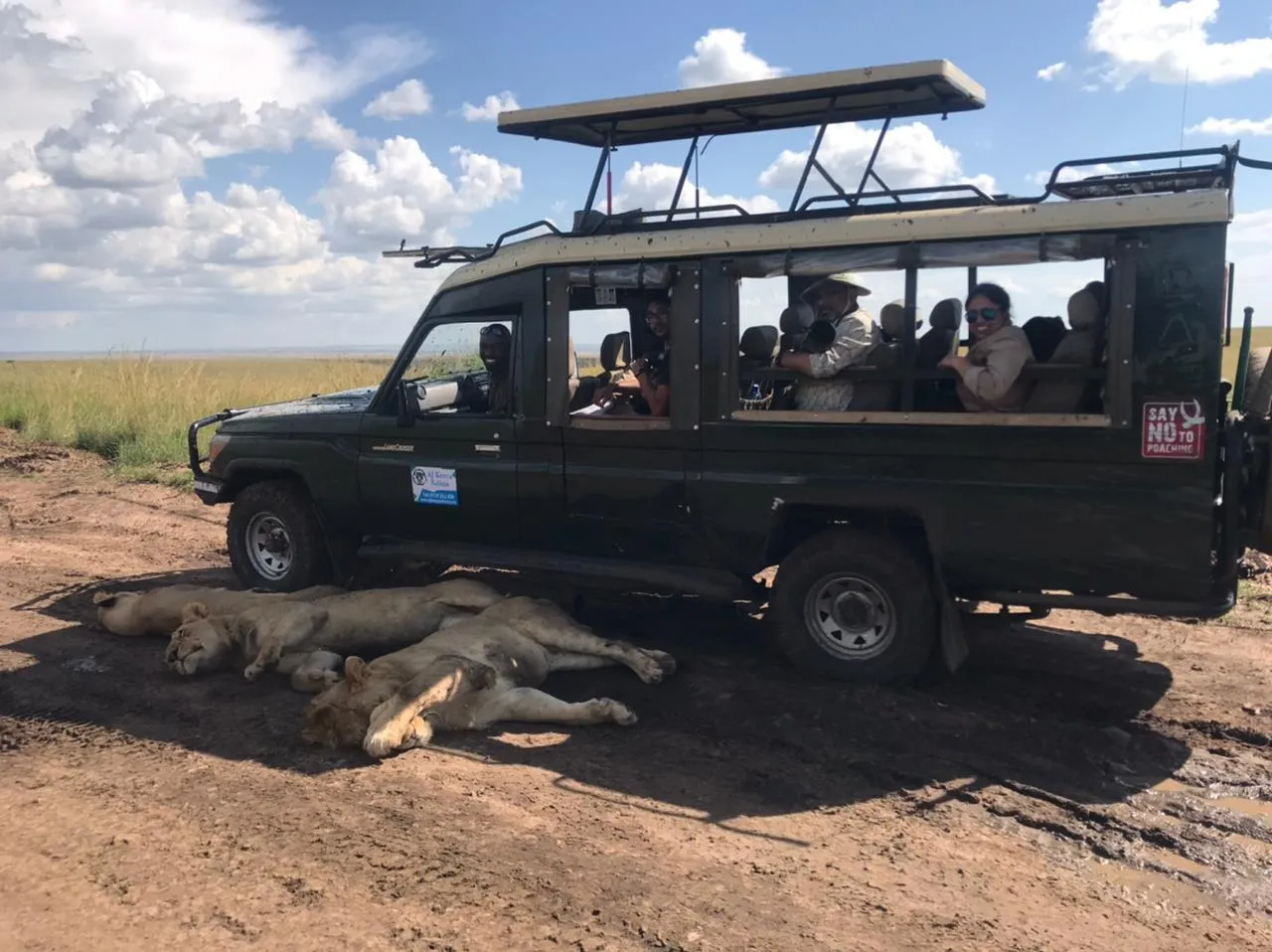
Unforgettable Masai Mara Safari Experiences
The Masai Mara National Park is not just about witnessing nature’s grandeur; it’s also about immersing yourself in the experience.
Whether you’re navigating the park in a 4×4 open-sided safari vehicle, soaring above the plains in a hot air balloon, or embarking on a guided walking safari, each experience offers a unique perspective of this incredible ecosystem.
Game drives in the Masai Mara, for instance, take you up close and personal with the wildlife, right in the heart of their natural habitat.
But if you’re looking for a different perspective, why not take to the skies with a hot air balloon safari? We will now explore these experiences and uncover what makes them genuinely unforgettable.
Game Drives: Up-close Encounters with Wildlife
Game drives are the quintessential safari experience in the Masai Mara, offering the opportunity to navigate the park’s diverse landscapes in a 4×4 open-sided safari vehicle. The beauty of a game drive is its unpredictability.
One moment, you might find yourself in the midst of a herd of elephants; the next, you could be witnessing a pride of lions lounging in the shade or a cheetah sprinting after its prey.
The best time for a game drive is during the early morning or late afternoon when the wildlife exhibits heightened activity. Armed with binoculars, a camera, and a sense of adventure safari, you’ll be ready to embark on a journey that promises to be as exciting as it is enlightening.
Hot Air Balloon Safaris: Soaring Above the Plains
A hot air balloon safari in the Masai Mara National Reserve offers:
- Ascending above the plains
- Rolling landscapes unfolding beneath you
- Panoramic view of wildlife and landscapes
- Aerial perspective of wildlife activities
- Awe-inspiring sights
- Peaceful way to form memories within the reserve
A typical hot air balloon safari includes:
- Lasting approximately one hour
- Allowing you plenty of time to take in the expansive vistas and observe the abundant wildlife from above
- Watching the sunrise over the Mara or spotting a herd of elephants from the sky
A hot air balloon safari is an experience you’ll never forget.
Walking Safaris: Immerse Yourself in Nature
For those who prefer to be on foot, a walking safari offers a unique way to experience the Masai Mara. These guided and protected expeditions take you into the heart of the wilderness, allowing you to:
- Discover the wonders of the Masai Mara up close and personal
- See the smallest insects and the largest predators
- Gain a fresh perspective on the abundant life that thrives in this ecosystem
But it’s not just about the wildlife. A walking safari also allows you to appreciate the smaller details that often go unnoticed – the textures of the vegetation, the sounds of the bush, the fresh scent of the earth. It’s an immersive experience that connects you to nature in a profound and meaningful way.
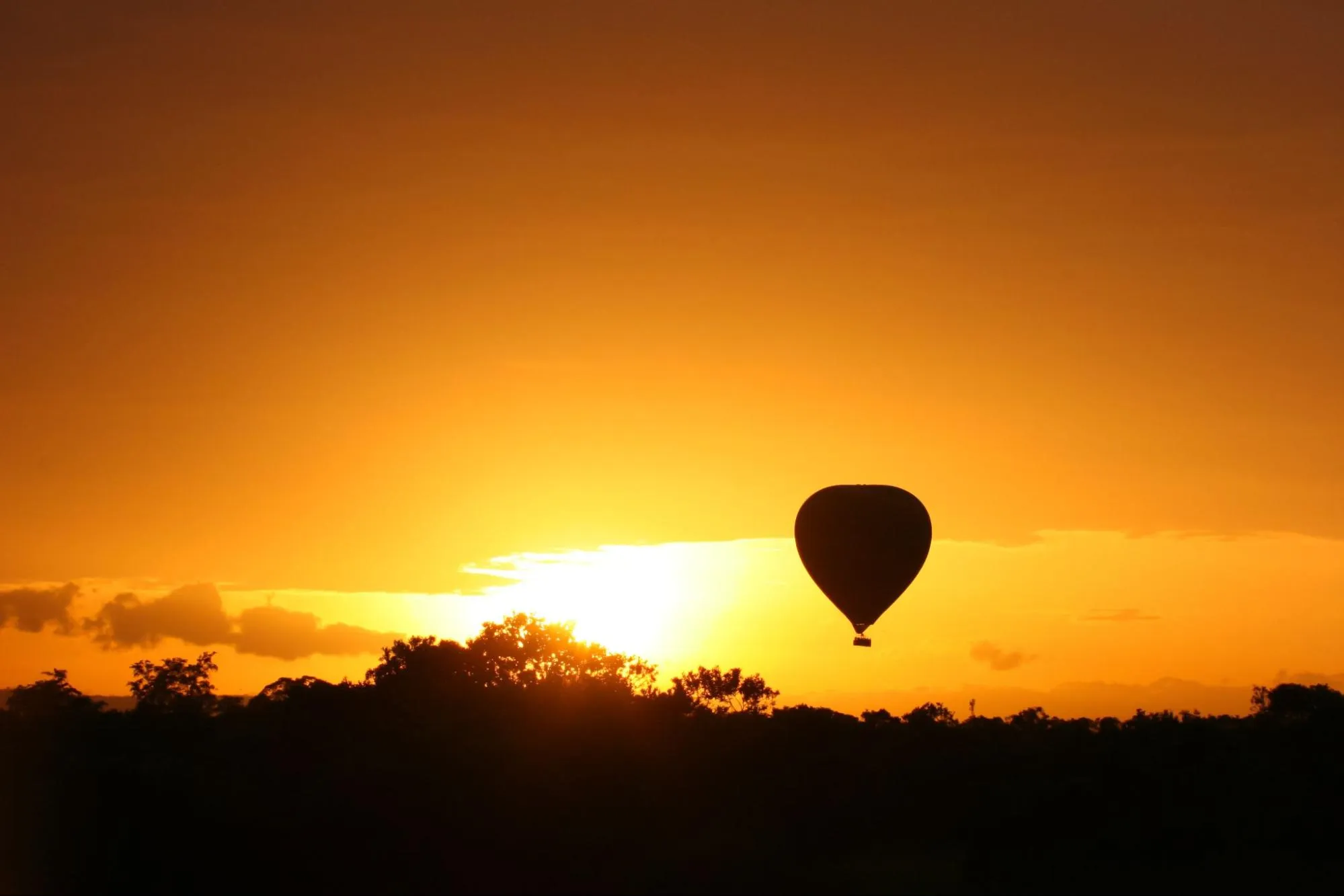
Accommodations: Where to Stay in Masai Mara
After a day of adventure, there’s nothing like returning to a comfortable, luxurious retreat in the heart of the wilderness. In the Masai Mara Game Reserve, you’re spoiled for choice when it comes to accommodations. Some options include:
- Angama Luxury Camp: perched high on the Oloololo Escarpment
- Mara Plains Camp: nestled in the exclusive Olare Motorogi Conservancy
- Bateleur Luxury Camp: elegantly rustic
- Sand River Camp: Luxury and modern
Each offers a unique blend of comfort, luxury, and a touch of the wild.
These accommodations not only provide a relaxing respite from the day’s activities, but they also offer unique experiences that further enhance your safari adventure. Whether it’s dining under the African stars, waking up to the sounds of the wild, or enjoying a refreshing dip in a pool overlooking the plains – these accommodations ensure that even your downtime is an unforgettable experience.
Angama Mara: Luxury on the Oloololo Escarpment
Perched on the edge of the Oloololo Escarpment, Angama Camp offers unparalleled luxury in the heart of the Masai Mara National Reserve. The lodge’s unique location provides:
- Breathtaking panoramic views of the Maasai Mara’s wildlife and landscapes
- A secluded and personalized safari experience
- Tented suites with all-glass fronts that blur the line between indoors and out, bringing the beauty of the wilderness right into your room.
But the luxury doesn’t stop at the accommodations. Angama Hotel offers a variety of services including guided safaris, all-inclusive meals and drinks, and exclusive experiences such as hot-air balloon safaris and community visits. With its blend of luxury and wilderness, Angama Lodge offers an experience that is as unique as the Masai Mara itself.
Mara Plains Camp: Authentic Safari Experience
Nestled in the exclusive Olare Motorogi Conservancy, Mara Plain offers an authentic safari experience in the heart of the Maasai Mara Game Reserve, adjacent to the Masai Mara National Park. The camp’s verdant, wooded accommodations by the Ntiakitiak River provide an intimate connection with the surrounding wilderness, creating a secluded and genuine environment.
Mara Plains Camp, located in the Trans Mara County Council region, offers a variety of services, including:
- Luxury safaris
- Flexible private safaris
- Night drives
- Cultural visits
- Hiking
- Bird watching
- Game viewing
- Local communities safari
- Nature walks
These services ensure a comprehensive and exclusive safari experience. With its blend of luxury and authenticity, Mara Plains offers an unforgettable safari experience that immerses you in the heart of the wild.
Bateleur Camp: Elegance in the Heart of the Wilderness
Situated in the heart of the wilderness, Bateleur offers:
- Elegant lodgings that immerse you in the beauty of the Masai Mara
- Only 18 tented suites, creating a private and exclusive accommodation experience
- Placing visitors in the center of the natural environment for an authentic and immersive stay.
In addition to its luxurious accommodations, Bateleur Hotel offers a diverse range of activities such as:
- Game drives
- Hot air balloon safaris
- Guided bush walks
- Bush breakfasts and dinners
- Sundowners
- Nature walks
- Local community safari
- Game viewing
Whether you’re relaxing in your tent at Kichwa Tembo Tented Camp, enjoying a meal under the African sky, or embarking on an exciting safari adventure, Bateleur Lodge ensures a memorable stay in the Masai Mara.

Connecting with the Maasai Culture
A trip to the Masai Mara National Reserve wouldn’t be complete without experiencing the rich culture of the Maasai tribe. This semi-nomadic ethnic group has lived in harmony with nature for centuries, coexisting with the wildlife and adapting their nomadic lifestyle to the rhythms of the African climate.
Through visits to local villages and interactions with Maasai warriors, you’ll have the opportunity to gain a deeper understanding of their customs, traditions, and way of life.
From their vibrant attire and intricate beadwork to their traditional practices and beliefs, the Maasai culture is a fascinating blend of ancient traditions and modern adaptations. We will now examine in detail how you can interact with the Masai people during your visit to the Masai Mara.
Maasai Villages: A Glimpse into Ancestral Life
A visit to a traditional Maasai village, or “manyatta,” is a journey back in time. Enclosed by a barrier of thorny bush shrubs for defense, the villages are organized with a distinct layout that mirrors the Maasai’s strong connection to their heritage and customs.
From the traditional huts made of cow dung and sticks to the vibrant beadwork displayed by the women, each aspect of the village offers a glimpse into the ancestral life of the Maasai tribe.
Within these villages, you can witness the societal roles that individuals fulfill, with men serving as protectors and decision-makers and women handling household duties in accordance with longstanding customs.
You can also see a wide range of traditional handicrafts, from unique attire to intricate beadwork jewelry, each symbolizing the Maasai’s abundant cultural heritage and artistic creativity.
Maasai Warriors: Guardians of the Wilderness
The Maasai warriors, with their bright red robes and finely braided hair, are a distinctive sight in the Masai Mara. These warriors serve as the protectors of the wilderness, demonstrating their bravery and physical prowess through traditional practices such as lion hunting.
As you interact with these warriors, you’ll gain a deeper understanding of their role in the Masai people society and their dedication to preserving the natural heritage of the Masai Mara.
Through their training, the Maasai warriors acquire a range of essential skills, from crafting and using traditional weapons to mastering the techniques of lion hunting.
These warriors also play a crucial role in wildlife conservation, adhering to a cultural prohibition against consuming wildlife and working on initiatives to protect predators. Their dedication to preserving the wilderness not only ensures the sustainability of the region’s wildlife, but also adds a unique dimension to your Masai Mara safari experience.
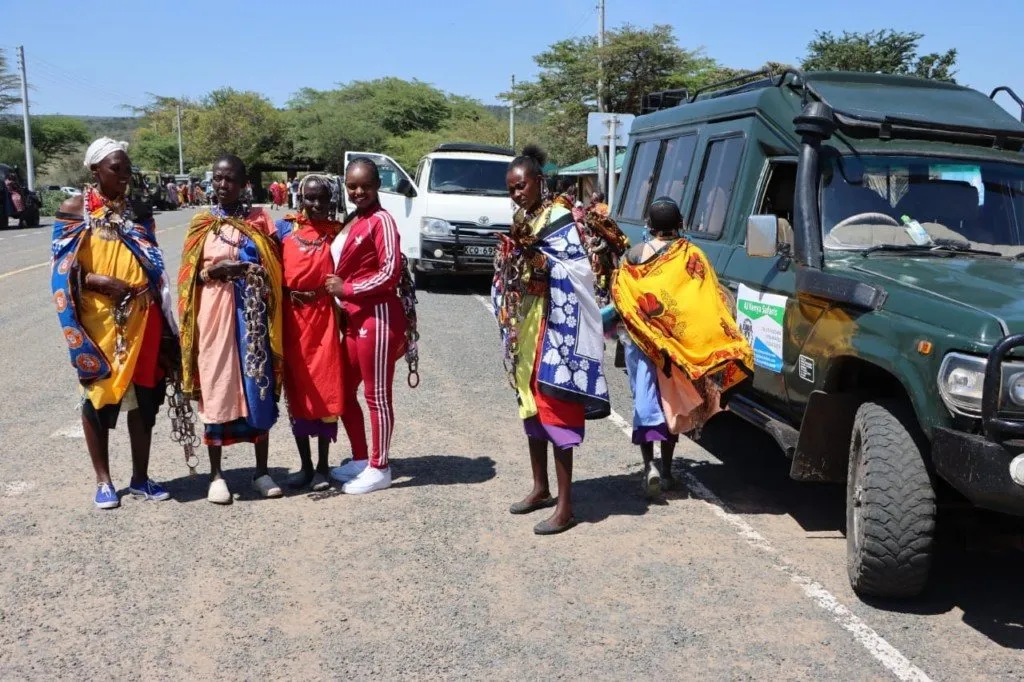
Practical Tips for Your Masai Mara Adventure
To make the most of your Masai Mara National Park safari adventure, it’s important to plan ahead and be prepared. From knowing the best time to visit to understanding what gear to pack, these practical tips will ensure that you’re well-equipped for your journey into the wilderness.
In addition, staying healthy during your trip is crucial. This includes staying up-to-date on vaccinations, following safety precautions during your safari, and being aware of potential health hazards in the Masai Mara. We will now look into these tips to ensure you’re fully prepared for your safari adventure.
When to Go: Timing Your Visit for Optimal Wildlife Viewing
Timing your visit to the Masai Mara National Reserve can greatly enhance your wildlife viewing experience. The best time to visit is during the dry season from June to October. Here’s why:
- The weather is dry, making it easier to spot wildlife.
- Animals congregate around rivers and waterholes, providing excellent viewing opportunities.
- The Annual Wildebeest Migration takes place during this time, which is a spectacular sight to witness.
Visiting during the dry season will ensure that you have the best chance of seeing a wide variety of wildlife in the Masai Mara.
Apart from the dry season, the calving season which takes place from November to December is also an interesting time to visit. During these months, you can witness newborn animals and heightened predator activity, adding another dimension to your wildlife viewing experience.
What to Pack: Essential Gear for a Comfortable Safari
Packing the right gear can greatly enhance your comfort during a safari. Essential items include:
- Clothing suitable for safaris, such as loose-fitting and comfortable attire
- A rain jacket
- Suitable footwear
- Hats for sun protection
- Insect repellent
Don’t forget to pack the necessary equipment for capturing your safari memories. A good quality camera with a zoom lens in the range of 100-400mm, or even up to 600mm, is recommended for capturing detailed images of animals from a safe distance. And remember, soft-sided luggage, such as a duffel bag or camping backpack, is advisable due to the restricted transportation capacities.
Staying Healthy: Vaccinations and Safety Precautions
Staying healthy during your trip is crucial. Before embarking on your journey, ensure that you:
- Receive the necessary vaccinations, including those against typhoid fever and yellow fever.
- Be aware of potential health risks such as influenza from livestock, minimal cases of malaria, and the possibility of African trypanosomiasis transmitted by tsetse flies.
- To reduce the risk of malaria, it’s advisable to use mosquito nets in lodges and camps.
In case of emergencies, medical facilities such as the Talek Community Health Centre and Mara Hospital Oloonkolin are located close to the Masai Mara National Reserve. Remember, preparation is key to ensuring a safe and enjoyable safari experience.
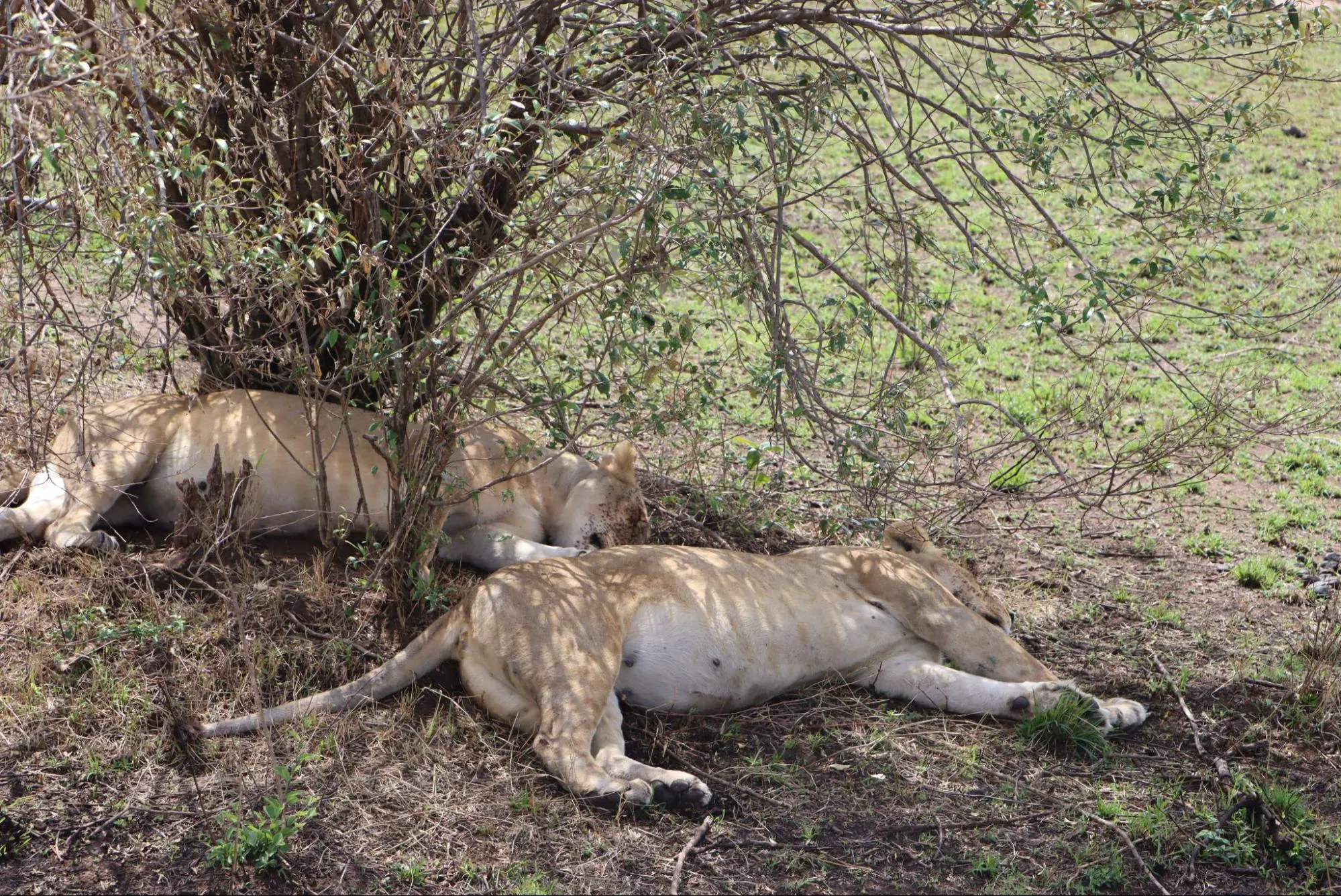
Frequently Asked Questions and Summary
From the sweeping plains of the Masai Mara to the vibrant culture of the Maasai people, a safari in the Masai Mara is an unforgettable journey into the heart of the African wilderness.
Whether you’re witnessing the spectacle of the Great Wildebeest Migration, soaring above the plains in a hot air balloon, or staying in luxurious accommodations that blend seamlessly with the natural environment, each moment is a testament to the beauty and diversity of this unique ecosystem.
But a Masai Mara safari is more than just a journey; it’s an experience that immerses you in the rhythms of nature and the vibrant culture of the Maasai tribe.
It’s a chance to connect with the wild, to learn from it, and to be inspired by it. So pack your bags, embark on this safari adventure, and let the Masai Mara leave an indelible mark on your soul.
1. Why is Masai Mara so famous?
The Masai Mara National Park is famous because it is one of the best wildlife destinations in Kenya and Africa, known for its premier conservation area and highly protected environment for wild animals. It is considered a crucial ecosystem for the world.
2. Why is Masai Mara so expensive?
Masai Mara National Reserve is expensive due to the park entry fees that support conservation efforts and sustain the ecosystem.
3. What makes Masai Mara special?
The Masai Mara National Park is special because of its stunning landscapes, diverse wildlife including lion, leopard, cheetah and the epic Great Migration, which attracts millions of wildebeests each year. It is also recognized as one of the Seven Natural Wonders of East Africa and one of the ten Wonders of the World.
4. Is it worth going to Masai Mara?
A Masai Mara safari is worth it because of the beautiful wildlife and scenery it offers. Wildlife roam freely in this wildlife sanctuary that includes savannah grassland and Saparingo River & Mara river banks where riverine forest meets.
5. What is the best time to visit the Masai Mara for wildlife viewing?
The best time to visit the Masai Mara National Reserve for wildlife viewing is during the dry season from June to October, as this is when the animals are easier to spot due to sparse vegetation and gather around water sources. The big large herds of wildebeest visit the main reserve in July to Oct, which is also the peak season for watching the big cats in action in Africa.
6. Who manages the Masai Mara & Mara triangle?
Masai Mara is managed by the Narok County Council as well as the local community. It is the ancestral inhabitants of the Maasai people and acquired the national reserve status in 1974. Some of the wildlife you can see during your Masai Mara safari include big cats such as lion, cheetah, and leopard and even large herds of elephants.
7. Which is the best airstrip in Masai Mara?
You can land at different airstrips during your Masai Mara safari such as Musiara airstrip, Keekorok airstrip and others. There are several airstrips in both the Northern and southern part of the reserve that will enable you to go for game viewing immediately. A flight safari showcases the best of Masai Mara from the air, viewing the cloud shadows, animals, and scattered bushes of the reserve.







